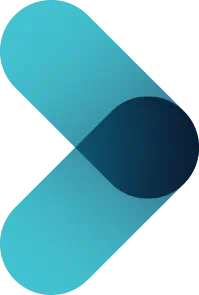GIVE NOW before 2025 ends—your gift will be doubled to help children in need. Click here to 2x your impact!

Ranked nationally in pediatric care.
Arkansas Children's provides right-sized care for your child. U.S. News & World Report has ranked Arkansas Children's in seven specialties for 2025-2026.

It's easier than ever to sign up for MyChart.
Sign up online to quickly and easily manage your child's medical information and connect with us whenever you need.

We're focused on improving child health through exceptional patient care, groundbreaking research, continuing education, and outreach and prevention.

When it comes to your child, every emergency is a big deal.
Our ERs are staffed 24/7 with doctors, nurses and staff who know kids best – all trained to deliver right-sized care for your child in a safe environment.

Arkansas Children's provides right-sized care for your child. U.S. News & World Report has ranked Arkansas Children's in seven specialties for 2025-2026.

Looking for resources for your family?
Find health tips, patient stories, and news you can use to champion children.

Support from the comfort of your home.
Our flu resources and education information help parents and families provide effective care at home.

Children are at the center of everything we do.
We are dedicated to caring for children, allowing us to uniquely shape the landscape of pediatric care in Arkansas.

Transforming discovery to care.
Our researchers are driven by their limitless curiosity to discover new and better ways to make these children better today and healthier tomorrow.

We're focused on improving child health through exceptional patient care, groundbreaking research, continuing education, and outreach and prevention.

Then we're looking for you! Work at a place where you can change lives...including your own.

When you give to Arkansas Children's, you help deliver on our promise of a better today and a healthier tomorrow for the children of Arkansas and beyond

Become a volunteer at Arkansas Children's.
The gift of time is one of the most precious gifts you can give. You can make a difference in the life of a sick child.

Join our Grassroots Organization
Support and participate in this advocacy effort on behalf of Arkansas’ youth and our organization.

Learn How We Transform Discovery to Care
Scientific discoveries lead us to new and better ways to care for children.

Learn How We Transform Discovery to Care
Scientific discoveries lead us to new and better ways to care for children.

Learn How We Transform Discovery to Care
Scientific discoveries lead us to new and better ways to care for children.

Learn How We Transform Discovery to Care
Scientific discoveries lead us to new and better ways to care for children.

Learn How We Transform Discovery to Care
Scientific discoveries lead us to new and better ways to care for children.

Learn How We Transform Discovery to Care
Scientific discoveries lead us to new and better ways to care for children.

When you give to Arkansas Children’s, you help deliver on our promise of a better today and a healthier tomorrow for the children of Arkansas and beyond.

Your volunteer efforts are very important to Arkansas Children's. Consider additional ways to help our patients and families.

Join one of our volunteer groups.
There are many ways to get involved to champion children statewide.

Make a positive impact on children through philanthropy.
The generosity of our supporters allows Arkansas Children's to deliver on our promise of making children better today and a healthier tomorrow.

Read and watch heart-warming, inspirational stories from the patients of Arkansas Children’s.

Hello.

Arkansas Children's Hospital
General Information 501-364-1100
Arkansas Children's Northwest
General Information 479-725-6800

Varicocele
What is a varicocele?
All boys have veins in the scrotum. Blood can collect in the veins, which then causes the veins to get bigger, or become swollen. When this happens, it is called a varicocele.Although they don't happen to every male, varicoceles are fairly common. About 15% of males between the ages of 13-25 years old have varicoceles. Varicoceles occur more on the left scrotum and are seen more often during or after puberty.
What are the signs and symptoms of a varicocele?
In most cases, boys or men who have this problem have no symptoms and might not even know they have a varicocele. Usually, a varicocele is found by a healthcare provider during a testicular exam. Varicoceles can feel like a “bag of worms” while standing and usually disappear while lying down. Sometimes after heavy exercise, hot weather, or standing for a long time, your child may feel a heaviness or dull discomfort in his scrotum.
How is a varicocele diagnosed?
Your healthcare provider will first ask questions about your child’s symptoms, family history, and health history. Your healthcare provider will then perform a physical exam on your child, including a careful exam of your child’s testicles. Your child’s Urologist may order a scrotal ultrasound, a painless imaging test that will take pictures and measure the size of each testicle. As your child continues to grow and go through adolescence, your child’s Urologist may order additional ultrasounds to make sure the testicles continue to grow equally.
How is a varicocele treated?
Your child’s treatment for a varicocele will depend on the cause, symptoms, and severity of the problem. The Division of Urology at Arkansas Children’s is experienced in diagnosing and treating varicoceles and will work with you to determine a diagnosis and treatment plan for your child.

Appointments
New and existing patients can visit our appointment hub for several ways to request an appointment, including online scheduling for many services.
Request an appointment
